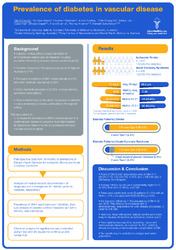Please use this identifier to cite or link to this item:
http://hdl.handle.net/11054/1508Full metadata record
| DC Field | Value | Language |
|---|---|---|
| dc.contributor | O'Connor, Ellie | en_US |
| dc.contributor | Adams, Nicholas | en_US |
| dc.contributor | Siriratnum, Pakeeran | en_US |
| dc.contributor | Godfrey, Amelia | en_US |
| dc.contributor | Hu, Chih-Chiang | en_US |
| dc.contributor | Low, Ashlea | en_US |
| dc.contributor | Hair, Casey | en_US |
| dc.contributor | Oqueli, Ernesto | en_US |
| dc.contributor | Sharma, Anand | en_US |
| dc.contributor | Kraemer, Thomas | en_US |
| dc.contributor | Sahathevan, Ramesh | en_US |
| dc.date.accessioned | 2020-03-05T03:51:44Z | - |
| dc.date.available | 2020-03-05T03:51:44Z | - |
| dc.date.issued | 2019 | - |
| dc.identifier.govdoc | 01464 | en_US |
| dc.identifier.uri | http://hdl.handle.net/11054/1508 | - |
| dc.description.abstract | Background and Aims: Diabetes mellitus (DM) is a major risk factor for atherosclerosis-related vascular diseases. This study aimed to compare the prevalence of DM in cerebrovascular and cardiovascular disease in a regional Australian hospital. Methods: We conducted a retrospective study (January 2015 to June 2017) to determine the prevalence of DM among ischaemic stroke (IS) and acute coronary syndrome (ACS) admissions to Ballarat Health Services. Diabetic control was based on HbA1c (%), measured within three months of index presentation. Logistic regression analysis was used to determine whether statistical significance was observed. Results: We identified 470 IS and 406 ACS events. Rates of DM in both populations were similar [119 (25.3%) in IS; 122 (30.1%) in ACS; p ¼ 0.118] with type 2 DM being significantly more frequent [116 (24.7%) in IS; 115 (28.3%) in ACS; p ¼ 0.222]. Average HbA1c scores were substantially higher in IS (8.09%) than ACS (7.36%); p ¼ 0.009. There were significantly more IS patients (61.6%) with an HbA1c >7% compared with ACS (45.8%); p ¼ 0.05. Conclusions: We found no difference in the prevalence of DM in IS and ACS. This reflects the increased risk of atherosclerosis, responsible for both disease processes, in patients with DM. However, in our population, those with poorer diabetic control were more likely to develop stroke than an ischaemic cardiac event. We suggest that this might be because IS is caused by macro and microvascular disease, as opposed to ACS, which is almost exclusively a macrovascular complication of DM. Our results require validation in a larger and varied population. | en_US |
| dc.description.provenance | Submitted by Gemma Siemensma (gemmas@bhs.org.au) on 2020-01-15T00:47:12Z No. of bitstreams: 0 | en |
| dc.description.provenance | Approved for entry into archive by Gemma Siemensma (gemmas@bhs.org.au) on 2020-03-05T03:51:44Z (GMT) No. of bitstreams: 1 Prevalence of diabetes ESOC 2019.pdf: 286496 bytes, checksum: d28f00217d4af8d80c5e79213fbe64f9 (MD5) | en |
| dc.description.provenance | Made available in DSpace on 2020-03-05T03:51:44Z (GMT). No. of bitstreams: 1 Prevalence of diabetes ESOC 2019.pdf: 286496 bytes, checksum: d28f00217d4af8d80c5e79213fbe64f9 (MD5) Previous issue date: 2019 | en |
| dc.title | Prevalence of diabetes in vascular disease. | en_US |
| dc.type | Conference | en_US |
| dc.type.specified | Poster | en_US |
| dc.bibliographicCitation.conferencedate | 22-24 May | en_US |
| dc.bibliographicCitation.conferencename | 5th European Stroke Organisation Conference | en_US |
| dc.bibliographicCitation.conferenceplace | Milan, Italy | en_US |
| dc.subject.healththesaurus | DIABETES MELLITUS | en_US |
| dc.subject.healththesaurus | VASCULAR DISEASE | en_US |
| dc.subject.healththesaurus | CEREBROVASCULAR | en_US |
| dc.subject.healththesaurus | CARDIOVASCULAR | en_US |
| Appears in Collections: | Research Output | |
Files in This Item:
| File | Description | Size | Format | |
|---|---|---|---|---|
| Prevalence of diabetes ESOC 2019.pdf | 279.78 kB | Adobe PDF |  View/Open |
Items in DSpace are protected by copyright, with all rights reserved, unless otherwise indicated.
